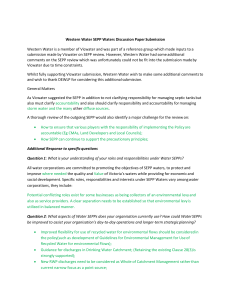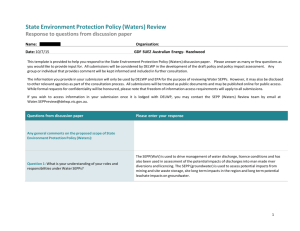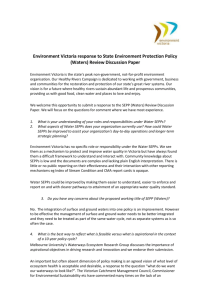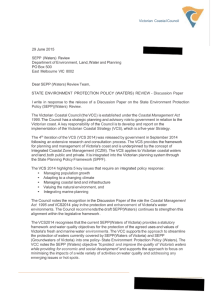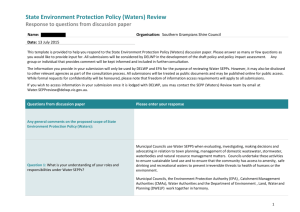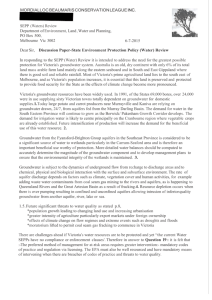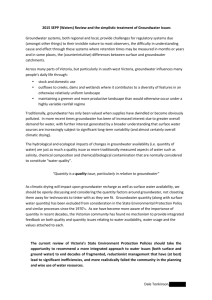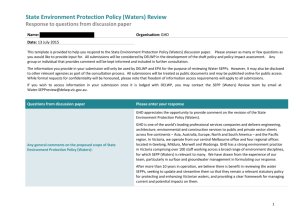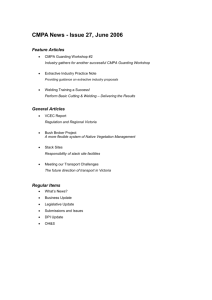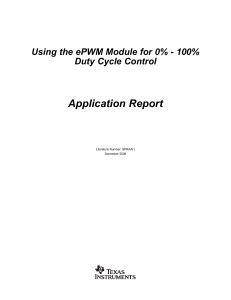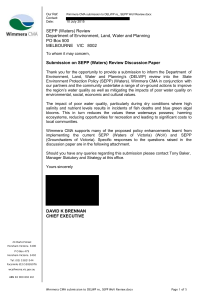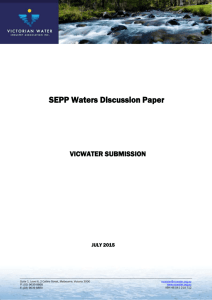Bonds - Department of Environment, Land, Water and Planning
advertisement
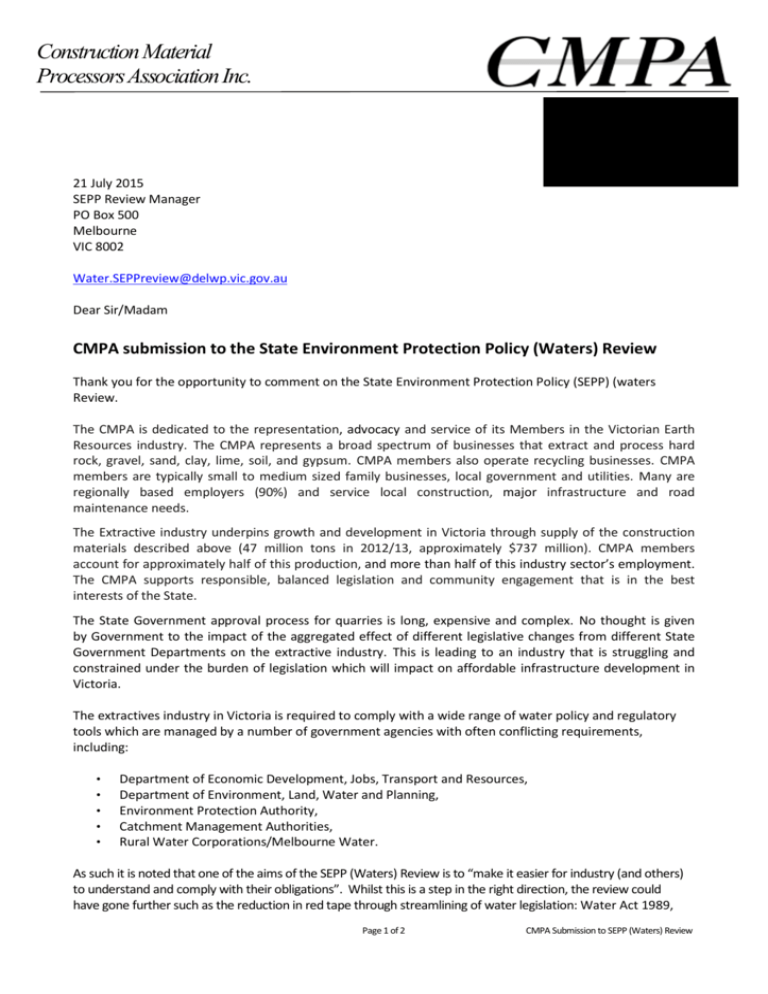
Construction Material Processors Association Inc. 21 July 2015 SEPP Review Manager PO Box 500 Melbourne VIC 8002 Water.SEPPreview@delwp.vic.gov.au Dear Sir/Madam CMPA submission to the State Environment Protection Policy (Waters) Review Thank you for the opportunity to comment on the State Environment Protection Policy (SEPP) (waters Review. The CMPA is dedicated to the representation, advocacy and service of its Members in the Victorian Earth Resources industry. The CMPA represents a broad spectrum of businesses that extract and process hard rock, gravel, sand, clay, lime, soil, and gypsum. CMPA members also operate recycling businesses. CMPA members are typically small to medium sized family businesses, local government and utilities. Many are regionally based employers (90%) and service local construction, major infrastructure and road maintenance needs. The Extractive industry underpins growth and development in Victoria through supply of the construction materials described above (47 million tons in 2012/13, approximately $737 million). CMPA members account for approximately half of this production, and more than half of this industry sector’s employment. The CMPA supports responsible, balanced legislation and community engagement that is in the best interests of the State. The State Government approval process for quarries is long, expensive and complex. No thought is given by Government to the impact of the aggregated effect of different legislative changes from different State Government Departments on the extractive industry. This is leading to an industry that is struggling and constrained under the burden of legislation which will impact on affordable infrastructure development in Victoria. The extractives industry in Victoria is required to comply with a wide range of water policy and regulatory tools which are managed by a number of government agencies with often conflicting requirements, including: • • • • • Department of Economic Development, Jobs, Transport and Resources, Department of Environment, Land, Water and Planning, Environment Protection Authority, Catchment Management Authorities, Rural Water Corporations/Melbourne Water. As such it is noted that one of the aims of the SEPP (Waters) Review is to “make it easier for industry (and others) to understand and comply with their obligations”. Whilst this is a step in the right direction, the review could have gone further such as the reduction in red tape through streamlining of water legislation: Water Act 1989, Page 1 of 2 CMPA Submission to SEPP (Waters) Review the Mineral Resources (Sustainable Development) Act and the Environment Protection Act 1970. Additionally, a Victorian water management guideline for the extractive industry should be produced. The following are specific comments that may need to be considered in the SEPP (Waters) Review: • Current experience with Victorian sites shows that discrepancies between groundwater and surface water parameters integration leads to operational difficulties in terms of discharge approvals. • Quarry development and operations are subject to a complex regulatory framework in Victoria. Differences in environmental conditions based on geographical location and expected background levels, lead to increased difficulties for small operators when planning and running small operations. The CMPA, therefore, would like a unified and consistent approach with regards to surface water and groundwater protection and supports the integrated water management approach of the two components, aligning water quality standards and long-term achievable (also taking into account the economic impact on small/medium sized quarries) objectives. • Setting out the values and beneficial uses of water environments; and the water quality objectives and indicators is a key priority for the CMPA providing they are also subject to economic impact. Confirmation of segments from actual monitoring data collected at the site, rather than solely obtained from maps of classified regions would ensure that background information retained for the site is adapted to the actual site specific environmental values may be ideal. However, this may be beyond the economic reach of small/medium sized businesses and not necessary due to the relatively small volumes of water involved and, hence, small environmental footprint in comparison to other industries. • It is sometimes impossible for operators to discharge groundwater into nearby creeks due to the discrepancy in parameters concentrations listed in the SEPP for groundwater and surface waters at the site. • Quarry sites are generally surrounded by both groundwater environments and surface water environments. Considering the strong relationship between surface waters and groundwater, it is important to improve the consistency in assessing and selecting triggers for groundwater and surface waters parameters. Additionally, in summary, CMPA does not support a water accounting framework due to the multiple sources of water used on site and the cost associated with their monitoring. The complexity of managing water resources for the limited volume (and the small environmental benefit/return to the State Government) would make small/medium sized family run quarries unviable. Please contact me if you would like further information or to discuss further. Yours sincerely Dr Elizabeth Gibson General Manager Page 2 of 2 CMPA Submission to SEPP (Waters) Review
